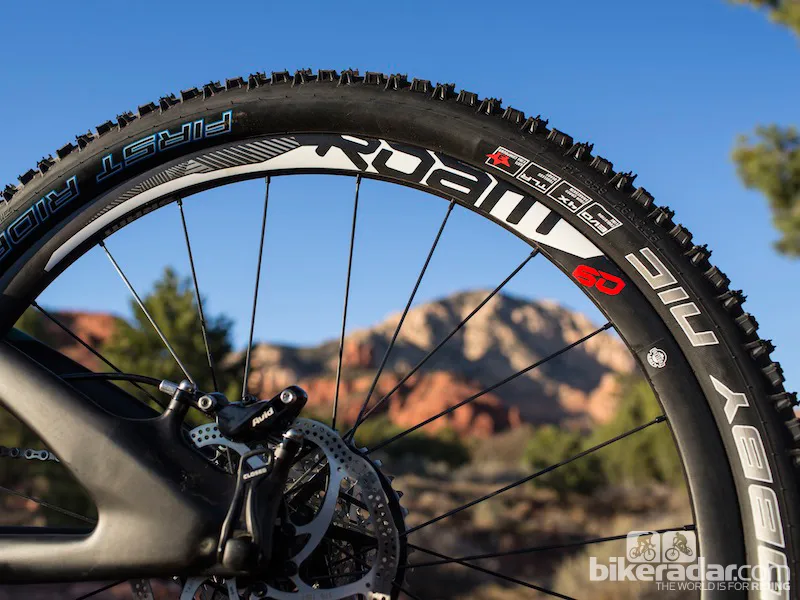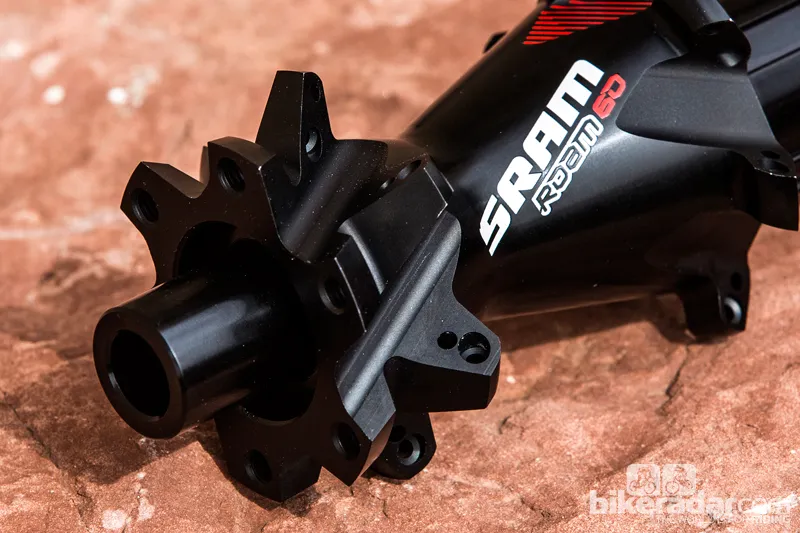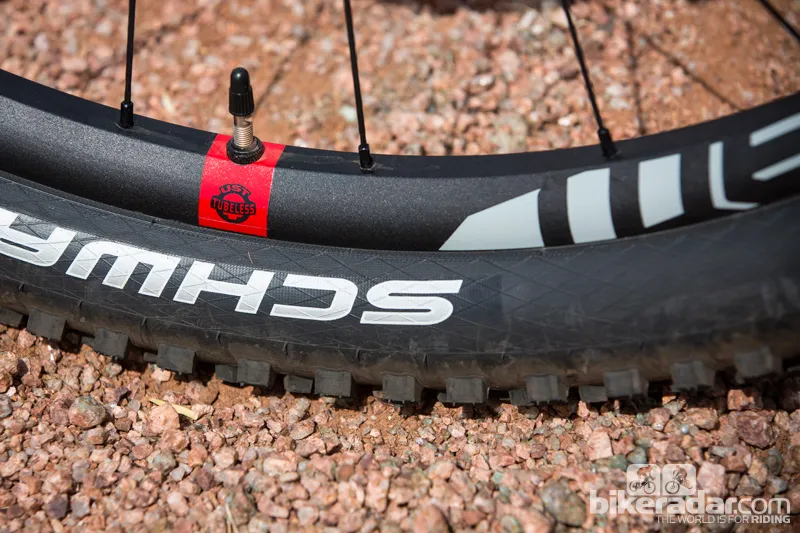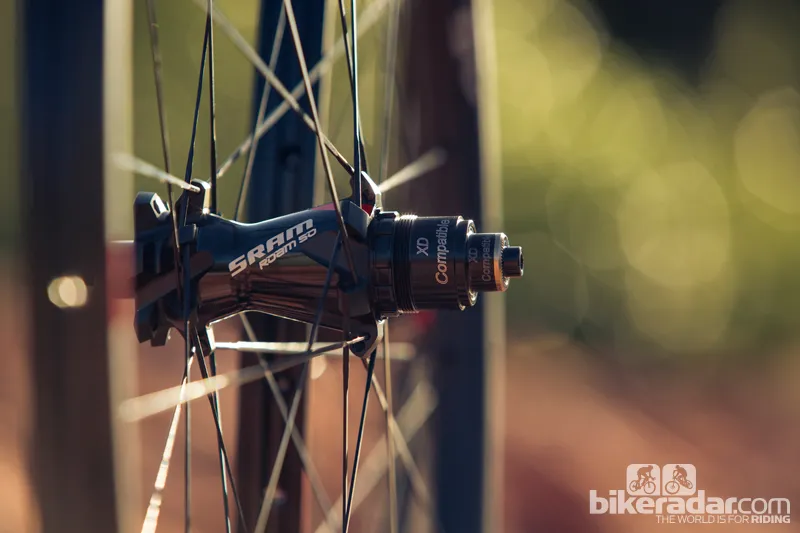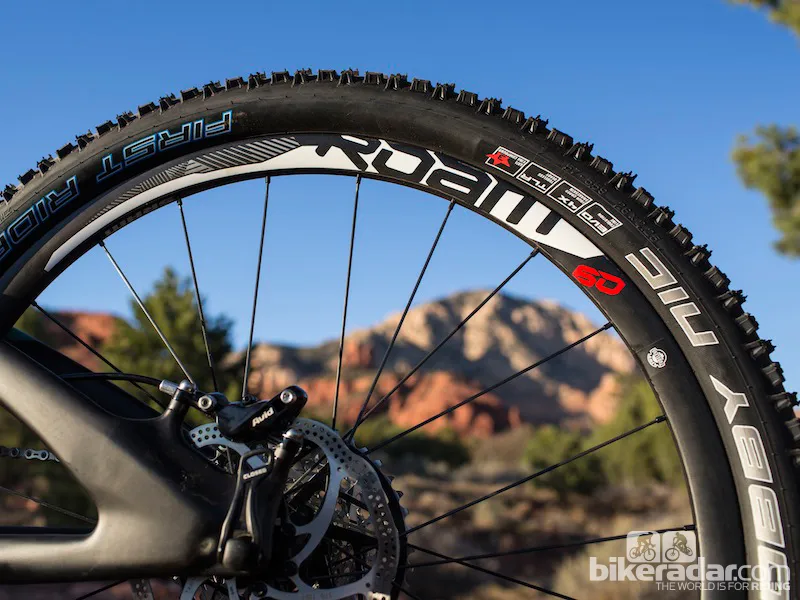SRAM is expanding its mountain bike wheel line, offering three new wheelsets – two with alloy rims and one with carbon – available in your choice of 26in, 27.5in (650b) and 29in sizes.
SRAM’s first foray into mountain bike wheels began in 2011 with the introduction of the Rise 60 carbon and Rise 40 aluminum wheelsets. Our general impressions of the Rise line were positive, though it was disappointing that the hoops weren’t designed to be tubeless – a significant oversight when comparing them with the competition. (Note: both the Rise 60 and 40 can be converted for tubeless use with 70g rubber rim strips.)
SRAM started with a blank canvas when it came time to develop the trail-oriented Roam and enduro-focused Rail. All three of the new wheelsets have UST-compatible rim profiles and feature a number of technologies intended the make them more versatile, durable and easier to service. It’s worth noting that these wheels are not intended to replace the Rise, but rather to stand alongside them, at least for the time being.
All about balance
In many ways, the three new wheels share the same intent of the recently introduced RockShox Pike fork – they’re components designed for all-round riding, rather than being focused solely on any one discipline.
The Roam 60, 50 and Rail 50 all share the same 24-hole hub shells and feature DT Swiss 240 internals. According to SRAM, the appeal of the DT Swiss system came from the robust and easy to service Star Ratchet freehub mechanism, as well as the ease with which end caps can be swapped to accommodate various quick-release and thru-axle systems.
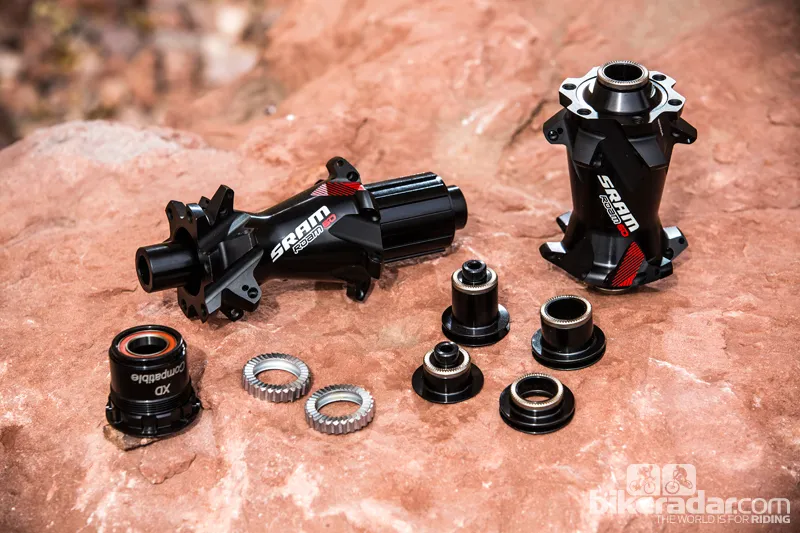
DT Swiss 240 internals allow easy servicing and compatibility with all popular axle configurations
SRAM was very keen to make wheel assembly and spoke replacement as straightforward as possible. To that end, the rims and hubs were designed so that each wheel size only uses one length of spoke for each wheel diameter: 26in wheels use 270mm spokes, 27.5in wheels 281mm, and 29in wheels 300mm.
SRAM was able to achieve this uniform spoke length by using offset spoke beds to even out the spoke angle and more evenly distribute tension between the two sides of the rim.
The other part of the spoke equation comes from the hubs; the holes in the flanges (or paddles, as SRAM calls them) for the straight-pull spokes are drilled to different depths on the drive and non-drive sides of the hub shells, which allows SRAM to use the same length spoke for each side of the wheel.
The Rise 60, 50 and Rail 50 all have different rims. The Rise 60 has carbon rims where the Rise 50 and Rail 50 use alloy ones. Yet they all share a similar cross-section, with additional material placed in high stress areas and less in sections of the rim where it was deemed unnecessary.
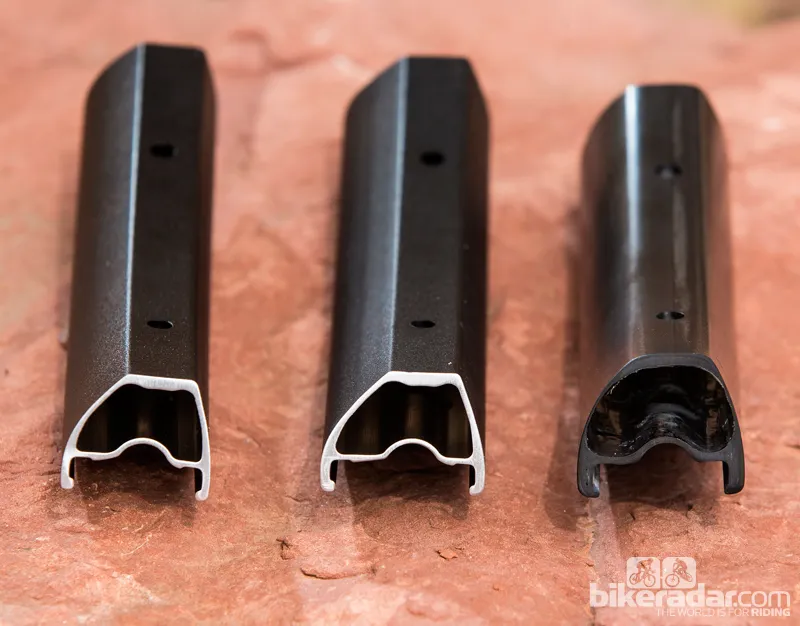
The Tapercore design in the cross-sections of the Roam 50, Rail 50 and Roam 60 rims (L-R)
In the case of the carbon Roam 60, this is done through the layup process. The Roam 50 and Rail 50 use a special extrusion process, dubbed Tapercore, that adds additional material to the sidewalls and bead hooks to better withstand impacts. The wall thickness then tapers along the sides of the rim, with additional material reinforcing the spoke bed. SRAM wheel engineers claim this results in a much stronger rim for a given weight than its competitors.
Roam 60
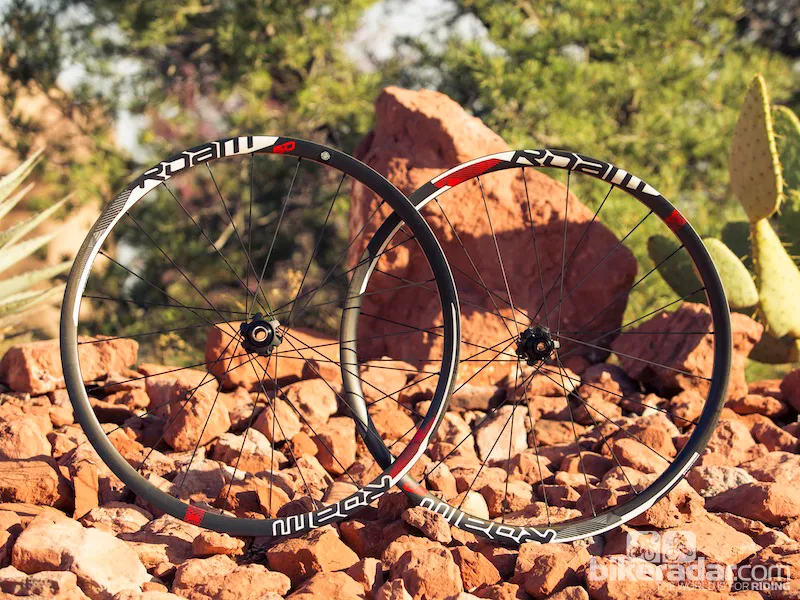
The top wheel in the new line features a carbon rim with an internal width of 21mm. It’s worth noting that, while all three wheelsets use DT Swiss 240 internals, the Roam 60 is the only one to receive the upgraded 36T Star Ratchet for quicker engagement, which halves the degrees of engagement from 20 degrees to 10 degrees.
Strength, not weight savings, was the driving factor behind the development of this carbon wheelset. The Roam 60 is 20-24g heavier than the Roam 50 of the same wheel size. According to SRAM wheel design engineer Jesse Jakomait this is because the Roam 60 is intended to have a broader range of uses than the Roam 50, extending from trail to enduro and all-mountain riding.
MSRP: US$2,199/£1,710/€1,969
Weights:
· 26in - 1,495g
· 27.5in - 1,550g
· 29in - 1,625g
Availability: July (26in) and August (27.5in and 29in)
Roam 50
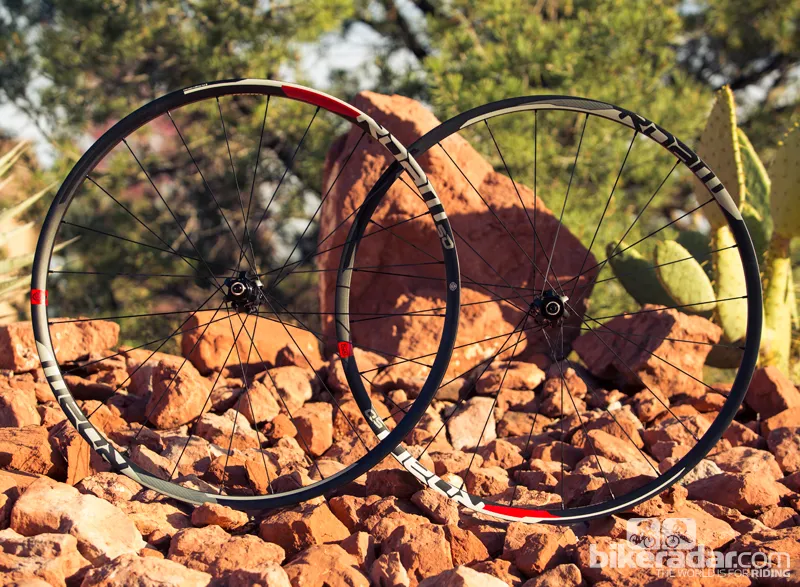
As mentioned above, the Roam 50 is actually a few grams lighter than the 60. Like the 60, the 50 has an internal width of 21mm.
MSRP: US$1,072/£840/€960
Weights:
· 26in – 1,475g
· 27.5in – 1,530g
· 29in – 1,611g
Availability: July
Rail 50

The Rail can be thought of as a wider, burlier version of the Roam. The Roam 50’s alloy rims are 2mm wider internally, and use a different extrusion that adds even more material to high stress areas. A 26in Rail rim weighs 500g, versus 410g for a Roam 50 rim.
MSRP: US$1,072/£840/€960
Weights:
· 26in – 1,690g
· 27.5in – 1,750g
· 29in – 1,830g
Availability: July
Learn more about the development of the new roam and rail wheels
First impressions
The 29in Roam 50 was the wheelset we spent time on at the Sedona, Arizona. Riding the 29in version gave us the opportunity to really test the wheels’ stiffness, which proved quite good despite the low spoke count.
The 21mm internal width did a good job of supporting the high volume tires our test bikes were equipped with, and riding a true UST tubeless setup allowed us to run low pressure without fear of pinch flatting.
We look forward to spending more time on these wheels in the coming months, to bring you a full BikeRadar review.
